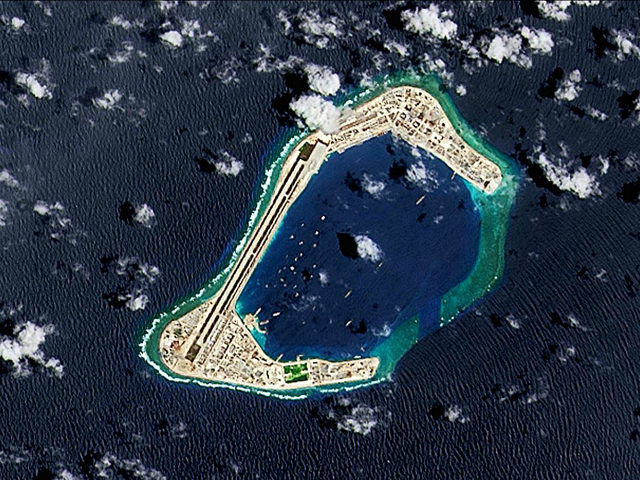Some coral reefs in the South China Sea are “gone forever” due to China’s illegal creation of military bases atop them, a marine biologist and expert on the sea told Radio Free Asia (RFA) on Monday.
“If you built something, if you’ve put dirt, rubble, and pavement [on top of coral reefs] … There’s no way to recover that,” John McManus, a professor of marine biology at the University of Miami in Florida, told RFA.
“The overwhelming majority of such construction has been by China, which infamously dredged up Fiery Cross Reef, Subi Reef, Mischief Reef, Woody Island, and some other islets between 2014 and 2017, to make way for artificial islands that now host its military,” according to the report.
Fiery Cross Reef, Subi Reef, and Mischief Reef belong to the disputed Spratly archipelago. All three reefs are primarily claimed by the Philippines, but China also lays claim to them. Similarly, Woody Island pertains to the disputed Paracel Islands and is chiefly claimed by Vietnam, but China also vies for control of the island.
Beijing claimed to have halted its large-scale reclamation in the contested maritime region in 2017, but recent “satellite imagery shows some parts of the South China Sea are still being built up” by China, RFA noted.
“A new area of reef in the northwest of Woody Island, China’s main military base in the Paracels, has been torn up and dredged to make way for an unknown structure. Construction equipment has been spotted periodically on that patch since early April,” according to the report.
Another major threat to the South China Sea is Beijing’s large-scale harvesting of giant clams in the waters. China uses an ecologically devastating method to harvest the endangered clams, according to the Asia Maritime Transparency Initiative (AMTI).
“The typical method employed by these poachers involved anchoring their boats and then dragging the reinforced props of their outboard motors across the reef surface to break up the coral, allowing the clams to be easily lifted out,” AMTI reported in May 2019.
“Since late 2018, satellite imagery has shown these fleets operating frequently at Scarborough Shoal [claimed chiefly by the Philippines] and throughout the Paracels, including at Bombay Reef,” the organization revealed.
Chinese fishermen “can earn about $1,000 for just two giant clams, which are found in layers of cement-like coral,” McManus told RFA on Monday.
“[V]irtually all of that harvesting in the South China Sea is by a fishing fleet from the southern Chinese town of Tanmen where trade in the clam shells is a lynchpin of the local economy,” he added.
McManus estimates that “100 square miles of reefs have been destroyed by [China’s] base-building and clam hunting” in the South China Sea.
A dedicated researcher, McManus has studied the sea’s biodiversity since the 1990s. He submitted expert testimony to a 2016 arbitral tribunal at the Hague that ruled on a case, brought by the Philippines, concerning China’s encroachment on the South China Sea.
In addition to ruling that Beijing had no legal basis for its claims to nearly 90 percent of the sea, the independent tribunal found that “China had violated its obligations under international law to protect the marine environment” of the sea based on McManus’ testimony. The marine biologist submitted evidence documenting “more than 25,000 acres of damage to shallow reef surfaces as a result of Chinese clam extraction as of 2016 (compared to roughly 15,000 acres damaged by dredging and landfill activities to create China’s artificial islands),” according to AMTI.
Beijing rejected the 2016 international court ruling and has continued to push forward with its illegal claims of sovereignty in the South China Sea since then.
At last month’s U.N. General Assembly, the Philippines and Vietnam called for China to curtail its illegal activity in the South China Sea and urged nations to adhere to international law within the highly contested maritime region. Both countries’ leaders invoked the U.N. Convention on the Law of the Sea (UNCLOS), which established guidelines for conduct in the sea in accordance with international law. In his speech, Philippine President Rodrigo Duterte specifically referenced the 2016 international court tribunal, established under UNCLOS, and its ruling, which dismissed Beijing’s claims to most of the sea as illegal.

COMMENTS
Please let us know if you're having issues with commenting.